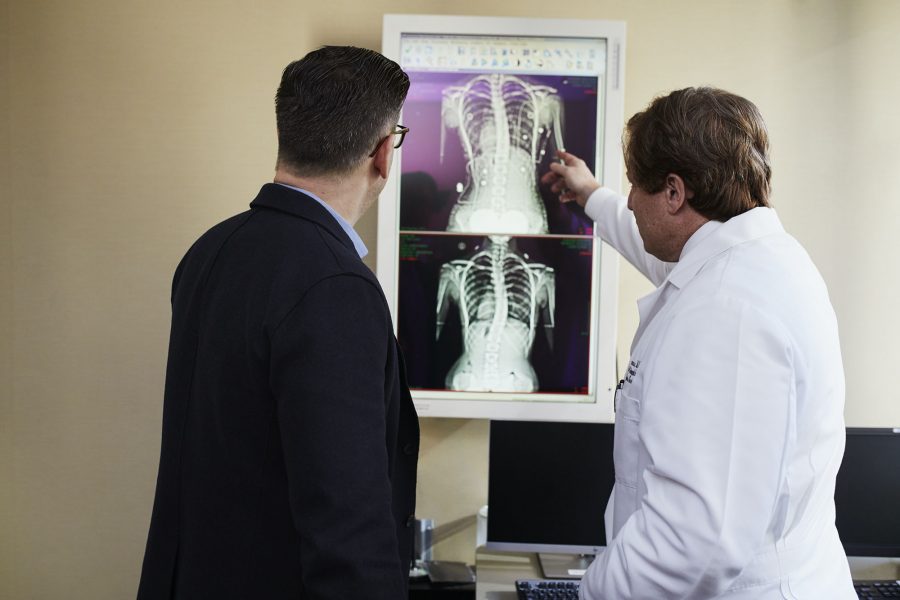3 Reasons Why X-rays Are Essential for Gonstead Chiropractic Treatment
Taking x-rays can sometimes be controversial among chiropractors and chiropractic patients alike. Some doctors disregard the need for x-rays because they “just don’t need it”; they “can feel it by palpating the spine and finding the fixations of the joints.” Patients may feel reluctant to step in front of the x-ray machine because they feel confident that they are “healthy” and that nothing is going on inside of their bodies, while still others are concerned about radiation or medical costs. Gonstead chiropractors take full-spine x-rays as part of the method in order to perform a specific analysis of body mechanics for each individual patient as well as for pathologies. We want you to be aware and feel confident when you come in for chiropractic treatment, so here are our top 3 reasons why x-ray analysis is crucial for proper chiropractic care.
1. To rule out pathologies
The first factor in the necessity of x-rays is one of professional judgement in medical professions. No one truly knows what is happening inside of the body. Even the most prestigious doctors in the world can not diagnose a condition until they look at the images in detail. They may take an educated guess, but without appropriate imaging, there is a higher likelihood of error. It is the doctor’s responsibility to find any significant abnormalities seen in the body, even if symptoms may seem minor. Even mild headaches or muscle pain could be caused by something else.
In Chiropractic, the musculoskeletal system is of prime importance, with emphasis placed on the bones and joints, especially the spine. This information helps determine whether the patient is a candidate for chiropractic care or if some other type of treatment might also be necessary. The full spine AP film x-ray is the most reliable information available for determining spinal characteristics and congenital malformations, assuring that chiropractors know exactly which vertebra they should correct when providing a chiropractic adjustment.
2. To find the real cause of the issue
This is the most important reason why Gonstead chiropractors take full spine x-rays and not simply the area that hurts. A chiropractor deals with the spine as a single functioning unit, not as a set of unrelated joints. It has been common knowledge for decades that the spine is a highly integrated, neuromusculoskeletal complex, and an intelligent bio-mechanical and neurological entity. This means that asymptomatic areas can potentially cause problems for other areas and/or contribute to health issues.
For instance, headaches can be caused by lower back spine dysfunction, even though there is no pain in the lower back itself. It may be surprising, but this is a rather common occurrence in the chiropractic profession as chiropractors look into the overall structure of spine, any bio-mechanical alterations, disc health, any joint misalignment, etc. This information is then combined with the patient’s history, complaints, their palpatory findings, all to narrow down and determine the specific diagnosis on the individual.
3. To determine the best approach for chiropractic adjustments
Once the chiropractor finds the cause of mechanic changes or any complaints, it is necessary to determine in which direction the spinal segments and/or joints are misaligned. They may be tilted forward, backward, or to the right or left, all depending on the patient and their condition. This variability is why Gonstead chiropractors do not rely solely on their palpation skills (feeling by hand) because while chiropractors are intuitive, it doesn’t always provide complete or accurate data. It is best to match up palpatory findings with x-ray findings prior to chiropractic adjustment. If the findings don’t match, the x-ray findings take precedent simply because they tend to be a more accurate starting point.
For example, if the spinal segment, let’s say L5, is misaligned to the right, then the line of drive for the adjustment is going to be applied directly in the opposite way. In addition, this information also provides guidance on where to stand during the adjustment, the contact point of the hand, and so on. This is how specific and precise the Gonstead Chiropractic adjustment is, it is not a simple manipulation, which can be performed by technicians without any analysis.
Lastly, regarding any concerns about radiation from taking x-rays, the exposure has minimal effect on the body, according to Harvard Health Publishing. Published in 2013, it says, “The biological effects of radiation on the body are described by a measurement called a millisievert (mSv). We are all exposed to some amount of natural radiation from the sun, from the earth, and even from some natural chemicals in our bodies. The average natural background radiation in the U.S. is 3.7 mSv per year…. A simple chest x-ray (two views) exposes a person to an average of 0.01 mSv, or roughly the amount of radiation you get in a day from the natural background. Dental x-rays are even less….And not to worry about standard x-rays or airport scanners.”
Moreover, due to advanced technologies, digital x-rays today produce 80% less radiation than traditional x-rays. This means it is highly unlikely that patients develop any issues from occasional traditional radiation exposure, and even less so with the process used in digital x-rays, reported by Independent Imaging Radiologists group.
The above 3 reasons alone are reason enough to take x-rays, but if you have any additional concerns, talk to your local Gonstead chiropractor or contact us at Alight Chiropractic! We are happy to help educate regarding x-ray analysis and chiropractic, and are available for consultation. Call Alight Chiropractic today!





